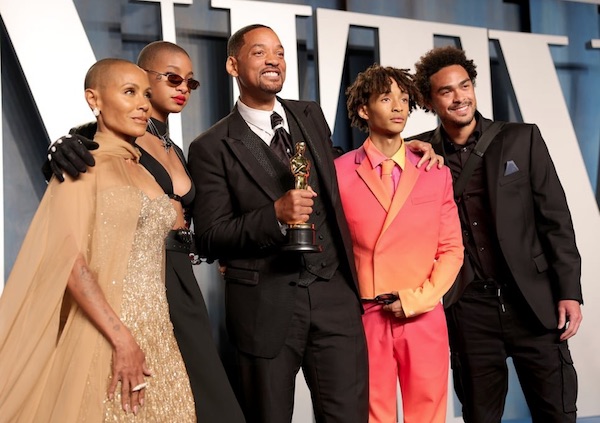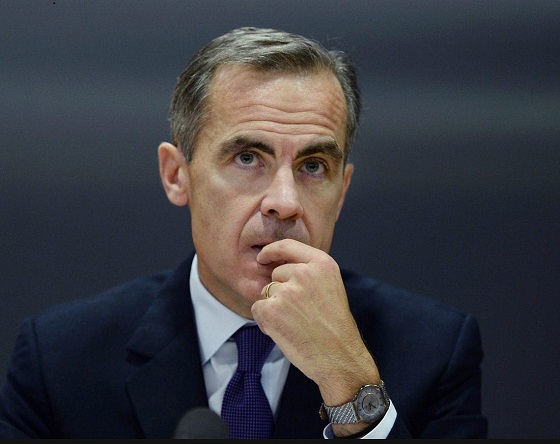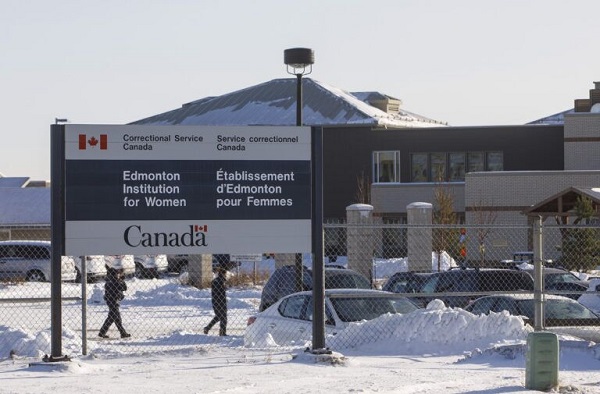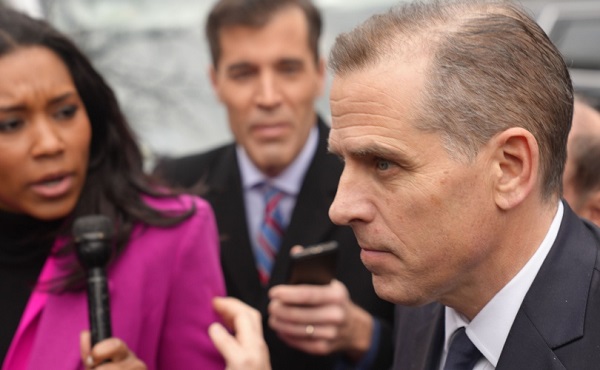Entertainment
Hometown athlete and Australian are RDC Athletes of the Week

From Red Deer College Communications
Red Deer College Athletics is proud to announce our Boston Pizza Athletes of the Week.
1. Alexandria Greenshields – Queens Volleyball Hometown – Red Deer, AB
Open Studies (1st year)
Alexandria Greenshields had a tremendous weekend on the court, helping the RDC Queens (14-8) defeat the SAIT Trojans (13-7) in a pair of matches to move even with the Ambrose University Lions (14-8) for second spot in the south. In Friday’s five set victory at the Gary W. Harris Canada Games Centre (25-22, 24-26, 27-25, 20-25 and 17-15), the five-foot-ten middle blocker totaled eight kills, two digs, two stuff blocks, one assist and one ace, accounting for 11 of the Queens’ points. Then on Saturday in Calgary, the first-year Open Studies student accumulated eight kills, five digs, four stuff blocks and one ace in another five set win (25-20, 16-25, 22-25, 25-20 and 15-13), contributing 13 more points for RDC.
Ali has been an integral part of the Queens’ strong play. Since November 2, the Red Deer College Queens have been one of the hottest teams in Alberta Colleges Athletic Conference (ACAC) Women’s Volleyball, going 13-3 in their past 16 matches.

2. Regan Fathers – Kings Volleyball
Hometown – East Fremantle, Western Australia Kinesiology General (5th year)
This past weekend, Regan Fathers was a force for the Kings Volleyball team (16-6). The six-foot-six outside hitter had 23 kills, five digs and three service aces while hitting for 48.6 per cent efficiency in Friday’s three set sweep over the SAIT Trojans (25-20, 25-19 and 25-21). The fifth-year’s contribution of 26 points helped him earn the Kings Player-of-the-Game award. Despite dropping a close five set decision on Saturday (20-25, 25-23, 25-22, 18-25 and 17-19), the talented student- athlete from East Fremantle, Western Australia, accumulated impressive numbers once again. Regan’s 21 kills led the Kings in Calgary, while adding three digs and two blocks.
The Kinesiology General student leads the league with 369 total kills and 5.13 kills per set. Regan will be a key player as the Kings prepare for the ACAC Championship from February 21-23 and the Canadian Collegiate Athletic Association (CCAA) Men’s Volleyball National Championship from March 7-9 at the Gary W. Harris Canada Games Centre, when the RDC Kings will be playing for their historic 14th national title.
This Week in RDC Athletics
This week, the RDC Basketball teams will play the Olds College Broncos in a home-and-home series, which will include the President’s Challenge during half-time of both Kings games. The Hockey Queens will face-off against the MacEwan University Griffins in a pair of games and the Kings will challenge the SAIT Trojans twice. Both volleyball teams will travel to Lethbridge and play the Kodiaks in two matches. This weekend will also feature the final RDC regular season home games, except for the rescheduled Kings Hockey game at 1:30 p.m. on Friday, February 22 at NexSource Centre in Sylvan Lake.
Here is a summary of what is happening this week in RDC Athletics.
Queens Basketball | Friday, Feb. 8 | 6:00 p.m. | Olds College
The Red Deer College Queens will play the Broncos in Olds. Sandra Garcia-Bernal continues to be one of top rebounders in the league. The second-year from Valencia, Spain sits third in ACAC Women’s Basketball, averaging 10.2 boards per game.
The five-foot-five guard’s tremendous effort and anticipation have helped guide the Queens to the top of the league in rebounding (47.6 per game).
Queens Basketball | Saturday, Feb. 9 | 6:00 p.m. | Gary W. Harris Canada Games Centre
The RDC Queens will tip-off against the Broncos on their home court.
Kings Basketball | Friday, Feb. 8 | 8:00 p.m. | Olds College
On the road, the fourth place Kings (8-8) will hit the hardwood against the Olds College Broncos (5-10), and it will be the first night of the President’s Challenge. Every game is significant as the RDC Kings look to lock down a playoff position in the south, and the Kings have been playing excellent lately with the postseason on their minds.
The Kings and Lethbridge College Kodiaks (8-9) are even with 16 points in the south standings, but the Kings have a game in hand, as both squads battle for a playoff spot.
After the home-and-home series against Olds College (5-10), the RDC Kings will play the Ambrose University Lions (12-6) once in Calgary and the Briercrest College Clippers (2-15) in two road games.
The Kodiaks will wrap up the regular season against the Briercrest College Clippers (2-15) twice and the Olds College Broncos (5-10) in a pair of games.
Red Deer’s Spencer Klassen continues to be a driving force for the Kings, leading the league with 25.7 points per game.
Kings Basketball | Saturday, Feb. 9 | 8:00 p.m. | Gary W. Harris Canada Games Centre
The Red Deer College Kings will host the Olds College Broncos.
At half-time, the second night of the President’s Challenge will take place in conjunction with Olds College. RDC President & CEO, Joel Ward, will compete against Stuart Cullum, President of Olds College, in a game of 21. The losing president from both evenings will have to the wear the other team’s jersey for a full day on Monday, February 11. If Ward and Cullum split the games of the 21, the point differential will determine the winner.
Queens Hockey | Friday, Feb. 8 | 7:00 p.m. | Gary W. Harris Canada Games Centre
The third place RDC Queens (8-8-4-0) will entertain the MacEwan University Griffins (13-4-2-0). MacEwan University sits in second spot in the standings with 28 points, six points behind NAIT (16- 2-2-0). The Red Deer College Queens have 20 points after 20 games and lead the fourth-place Olds College Broncos (6-11-1-0) by seven points.
Queens Hockey | Saturday, Feb. 9 | 6:00 p.m. | MacEwan University
The RDC Queens will face-off against the Griffins in Edmonton.
Kings Hockey | Friday, Feb. 8 | 7:00 p.m. | SAIT
The Red Deer College Kings (13-5-1-1) will tangle with the SAIT Trojans (14-5-0-0) in Calgary. Both teams share second place with 28 points, although the Trojans have a game in hand. It continues to be a battle at the top of the standings. The NAIT Ooks (16-6-0-0) lead ACAC Men’s Hockey with 32 points, but have also played two more games than the Kings. The MacEwan University Griffins (13-5-1-0) sit in fourth with 27 points. The University of Alberta Augustana Vikings (12-7-1-0) are next with 25 points.
The RDC Kings are the most disciplined team in the league, taking the fewest penalty minutes as a group. Although, even when a skater down the Kings can score, recording five shorthanded markers.
SAIT’s Dean Allison leads ACAC Men’s Hockey with 30 points, but RDC’s Chase Thudium is close behind with 27.
As part of a beer tasting event, participants are encouraged to make a donation with proceeds going to the Central Alberta Sexual Assault Support Centre (CASASC). Olds Brewery and Troubled Monk will be sponsoring the event.
Kings Hockey | Saturday, Feb. 9 | 7:00 p.m. | Gary W. Harris Canada Games Centre
The Kings will face the Trojans at home.
Queens Volleyball | Friday, Feb. 8 | 6:00 p.m. | Lethbridge College
The second place Red Deer College Queens (14-8) will take on the Lethbridge College Kodiaks (3-17). The RDC team has really progressed, going 8-2 over the past 10 matches.
Libero Kaylee Domoney has recorded a total of 364 digs, which is the most in the league.
Queens Volleyball | Saturday, Feb. 9 | 1:00 p.m. | Lethbridge College
In an afternoon rematch, the Volleyball Queens will challenge the Kodiaks.
Kings Volleyball | Friday, Feb. 8 | 8:00 p.m. | Lethbridge College
The second place Red Deer College Kings (16-6) will face the undefeated Kodiaks (20-0) in Lethbridge. In the first weekend of the season, the Lethbridge College Kodiaks picked up a pair of tight five set decisions over the RDC Kings, but the Kings did not have all of their players in action.
The Kings are ranked eighth and the Kodiaks are second in the CCAA.
The RDC Kings have a postseason spot locked up already in the south but want to continue fine- tuning their game leading up to the ACAC Championship and CCAA National Championship.
Kings Volleyball | Saturday, Feb. 9 | 3:00 p.m. | Lethbridge College
The Kings and Kodiaks will hit the court in the afternoon.
For more information on RDC Athletics, the student-athletes, scores, and game recaps of conference games, please visit: rdcathletics.ca
Business
California planning to double film tax credits amid industry decline

From The Center Square
By
California legislators have unveiled a bill to follow through with the governor’s plan of more than doubling the state’s film and TV production tax credits to $750 million.
The state’s own analysis warns it’s likely the refundable production credits generate only 20 to 50 cents of state revenue for every dollar the state spends, and the increase could stoke a “race to the bottom” among the 38 states that now have such programs.
Industry insiders say the state’s high production costs are to blame for much of the exodus, and experts say the cost of housing is responsible for a significant share of the higher costs.
The bill creates a special carve-out for shooting in Los Angeles, where productions would be able to claim refundable credits for 35% of the cost of production.
California Gov. Gavin Newsom announced his proposal last year and highlighted his goal of expanding the program at an industry event last week.
“California is the entertainment capital of the world – and we’re committed to ensuring we stay that way,” said Newsom. “Fashion and film go hand in hand, helping to express characters, capture eras in time and reflect cultural movements.”
With most states now offering production credits, economic analysis suggests these programs now produce state revenue well below the cost of the credits themselves.
“A recent study from the Los Angeles County Economic Development Corporation found that each $1 of Program 2.0 credit results in $1.07 in new state and local government revenue. This finding, however, is significantly overstated due to the study’s use of implausible assumptions,” wrote the state’s analysts in a 2023 report. “Most importantly, the study assumes that no productions receiving tax credits would have filmed here in the absence of the credit.”
“This is out of line with economic research discussed above which suggests tax credits influence location decisions of only a portion of recipients,” continued the state analysis. “Two studies that better reflect this research finding suggest that each $1 of film credit results in $0.20 to $0.50 of state revenues.”
“Parks and Recreation” stars Rob Lowe and Adam Scott recently shared on Lowe’s podcast how costs are so high their show likely would have been shot in Europe instead.
“It’s cheaper to bring 100 American people to Ireland than to walk across the lot at Fox past the sound stages and do it and do it there,” said Lowe.
“Do you think if we shot ‘Parks’ right now, we would be in Budapest?” asked Scott, who now stars in “Severance.”
“100%,” replied Lowe. “All those other places are offering 40% — forty percent — and then on top of that there’s other stuff that they do, and then that’s not even talking about the union stuff. That’s just tax economics of it all.”
“It’s criminal what California and LA have let happen. It’s criminal,” continued Lowe. “Everybody should be fired.”
According to the Public Policy Institute of California, housing is the single largest expense for California households.
“Across the income spectrum, 35–44% of household expenditures go to covering rent, mortgages, utilities and home maintenance,” wrote PPIC.
The cost of housing due to supply constraints now makes it nearly impossible for creatives to get their start in LA, said M. Nolan Gray, legislative director at housing regulatory reform organization California YIMBY.
“Hollywood depends on Los Angeles being the place where anybody can show up, take a big risk, and pursue their dreams, and that only works if you have a lot of affordable apartments,” said Gray to The Center Square. “We’ve built a Los Angeles where you have to be fabulously wealthy to have stable and decent housing, and as a result a lot of folks either are not coming, or those who are coming need to paid quite a bit higher to make it worth it, and it’s destroying one of California’s most important industries.”
“Anybody who arrived in Hollywood before the 2010s, their story is always, ‘Yeah, I showed up in LA, and I lived in a really, really dirt-cheap apartment with like $10 in my pocket.’ That just doesn’t exist anymore,” continued Gray. “Does the Walt Disney of 2025 not take the train from Kansas City to LA? Almost certainly not. If he goes anywhere, he goes to Atlanta.”
Business
Disney cancels series four years into development, as it moves away from DEI agenda

 MxM News
MxM News
Quick Hit:
Disney’s decision to cancel its planned ‘Tiana’ streaming series follows the entertainment giant’s move away from diversity, equity, and inclusion (DEI) policies. The company, once deeply committed to political activism, is now struggling to recover from years of financially disastrous content choices.
Key Details:
-
Disney announced the end of DEI-based management decisions and the winding down of its “Reimagining Tomorrow” initiative earlier this year.
-
The Hollywood Reporter revealed that the cancellation of ‘Tiana’ was part of Disney’s broader retreat from “original longform content for streaming.”
-
Analyst Ian Miller notes that Disney’s prior focus on political messaging rather than quality content led to repeated box office failures.
Diving Deeper:
Disney has spent the past several years prioritizing political activism over storytelling, leading to a sharp decline in the company’s financial performance and audience engagement. According to Ian Miller of OutKick, “Disney assumed that any content that represented ‘diverse’ audiences or featured ‘diverse’ characters would be successful.” That assumption, he argues, proved costly.
The decision to cancel ‘Tiana’ comes at a time when Disney is reeling from multiple box office disappointments, including the expected failure of ‘Snow White’ and the ongoing struggles of both Marvel and Lucasfilm properties. Miller highlights the alarming trend, stating, “Marvel’s ‘Captain America: Brave New World’ may actually lose money, with a disastrous $342 million worldwide gross through the first three and a half weeks.”
The ‘Tiana’ series was first announced in December 2020, a time when Disney was fully embracing its progressive agenda. The Hollywood Reporter noted that the show struggled to find its creative direction despite being in development for over four years. Miller suggests that, in the past, Disney would have continued with such a project regardless of its quality, out of fear of backlash from the left. “Under its prior operating mandate, Disney would have pushed forward anyway, believing that canceling a show based on a black character would be unacceptable to left-wing critics,” Miller writes.
However, the company’s recent shift suggests an overdue recognition that audiences ultimately demand quality over ideology. As Miller points out, “Parents want to take their kids to the movies, or give them family-friendly content to watch at home when they need a distraction. For decades, that meant Disney. Until the company prioritized targeting demographics instead of quality.”
While Disney appears to be learning from its missteps, the road to recovery will be long. As Miller emphasizes, the key to regaining audience trust isn’t to abandon diverse characters but to “get it right instead of doing it to check a box.”
-

 Also Interesting2 days ago
Also Interesting2 days agoMortgage Mayhem: How Rising Interest Rates Are Squeezing Alberta Homeowners
-

 2025 Federal Election2 days ago
2025 Federal Election2 days agoConservative Party urges investigation into Carney plan to spend $1 billion on heat pumps
-

 Also Interesting2 days ago
Also Interesting2 days agoExploring Wildrobin Technological Advancements in Live Dealer Games
-

 2025 Federal Election2 days ago
2025 Federal Election2 days agoCommunist China helped boost Mark Carney’s image on social media, election watchdog reports
-

 2025 Federal Election2 days ago
2025 Federal Election2 days agoFifty Shades of Mark Carney
-

 2025 Federal Election2 days ago
2025 Federal Election2 days agoCorporate Media Isn’t Reporting on Foreign Interference—It’s Covering for It
-

 Business1 day ago
Business1 day agoStocks soar after Trump suspends tariffs
-

 Justice2 days ago
Justice2 days agoCanadian government sued for forcing women to share spaces with ‘transgender’ male prisoners




